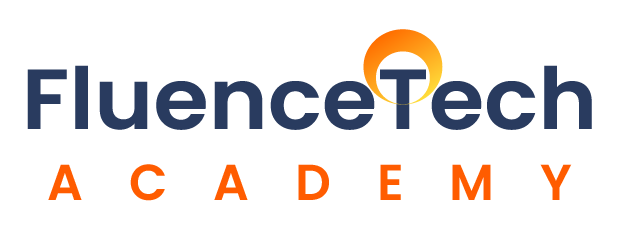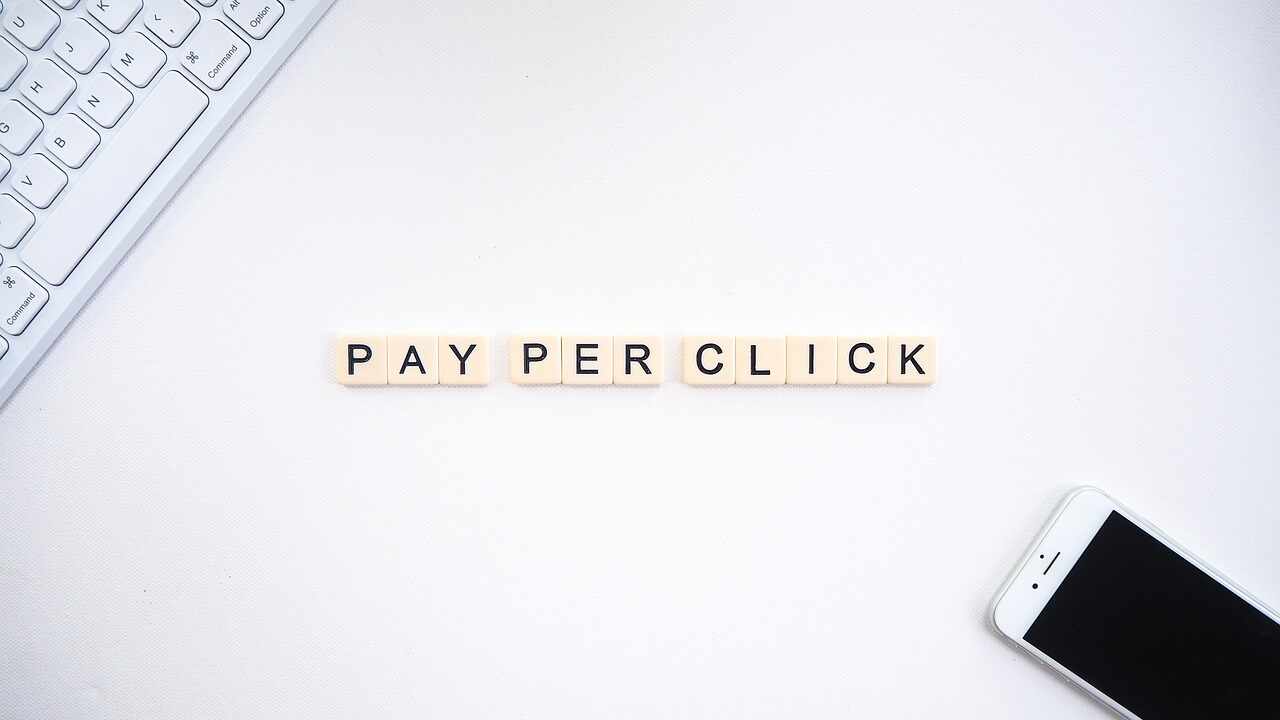In the fast-paced world of digital marketing, Pay Per Click (PPC) advertising has become a crucial tool for businesses to reach their target audience and drive conversions. With the right strategy, PPC can deliver a high return on investment (ROI) and help businesses stay ahead of the competition.
But with so many options and factors to consider, it can be overwhelming for those new to Pay Per Click.
In this blog post, we’ll break down the key elements of a successful Pay Per Click campaign, share best practices for optimization, and offer tips for maximizing your ROI. Get ready to take your digital marketing to the next level with Pay Per Click!
What is Pay Per Click (PPC)?
Pay Per Click (PPC) is a form of online advertising where advertisers pay each time a user clicks on one of their ads. It is a model used to drive traffic to websites and is often used as part of a digital marketing campaign. With Pay Per Click, advertisers bid on specific keywords or phrases relevant to their target audience, and their ads appear at the top of search engine results pages or on websites that are part of a display network. The goal of Pay Per Click is to attract relevant traffic to a website and convert visitors into customers, with the advertiser only paying when someone clicks on their ad.
Importance of Pay Per Click in digital marketing

Pay Per Click (PPC) is an important component of digital marketing as it offers businesses a way to quickly and effectively drive traffic to their website and increase conversions. PPC campaigns can be highly targeted, allowing businesses to reach their desired audience based on factors such as demographics, location, and search intent.
This makes Pay Per Click an efficient and cost-effective way to generate leads and increase brand awareness. Additionally, with the ability to track and measure the success of Pay Per Click campaigns, businesses can easily adjust their strategies to optimize their return on investment (ROI). Overall, PPC is a powerful tool that can help businesses of all sizes and industries reach their digital marketing goals.
Pay Per Click advertising provides businesses with a level of control that is not possible with other forms of advertising. Advertisers can choose the keywords they want to target, the geographic locations they want to target, the times of day they want their ads to show, and even the devices on which their ads will be displayed. This level of control allows businesses to tailor their campaigns to their specific needs and goals, resulting in better performance and higher ROI.
Another benefit of Pay Per Click is its flexibility. With PPC, advertisers can start and stop campaigns at any time, adjust their budgets and bids, and change their ad copy and landing pages. This flexibility allows businesses to adapt quickly to changing market conditions and stay ahead of their competition.
Pay Per Click is also highly measurable, providing businesses with a wealth of data on campaign performance. Advertisers can track metrics such as clicks, impressions, click-through rates, conversion rates, and cost per click (CPC). This data allows businesses to analyze their campaigns and make informed decisions about their marketing strategies.
In addition, Pay Per Click can be used in conjunction with other digital marketing tactics such as search engine optimization (SEO) and social media marketing to create a comprehensive online marketing strategy.
How does Pay Per Click work?
Pay Per Click (PPC) advertising works on an auction-based system, where advertisers bid on specific keywords or phrases that are relevant to their target audience. When a user enters a search query into a search engine that matches the keywords the advertiser has bid on, the search engine runs an auction to determine which ads will be displayed.
The auction takes into account several factors, including the bid amount, the relevance of the ad to the search query, and the ad’s historical performance. The advertiser with the highest bid and most relevant ad will generally be awarded the top spot on the search engine results page.
When a user clicks on an ad, the advertiser is charged a certain amount of money, which is referred to as the cost per click (CPC). The CPC can vary depending on the competitiveness of the keywords being targeted and the quality score of the ad.
The quality score is a metric used by search engines to evaluate the relevance and quality of an ad and its landing page. A higher quality score can result in a lower CPC and a higher ad position, which can lead to better performance and higher ROI.
PPC ads can be displayed on search engine results pages (SERPs) or on websites that are part of a display network. Display network ads can be either text or image-based and are displayed on websites that have agreed to display ads from the network.
Overall, Pay Per Click works by allowing advertisers to bid on specific keywords or phrases, with the ads being displayed when a user enters a search query that matches the keywords. Advertisers are charged only when a user clicks on their ad, making it a cost-effective and measurable way to drive traffic to a website.
Advantages and disadvantages of Pay Per Click

Advantages of Pay Per Click (PPC) advertising:
PPC allows businesses to reach their target audience based on factors such as demographics, location, and search intent, resulting in highly targeted campaigns that are more likely to convert.
Pay Per Click provides businesses with a wealth of data on campaign performance, allowing them to track metrics such as clicks, impressions, conversion rates, and cost per click (CPC), and adjust their strategies accordingly.
PPC campaigns can be started and stopped at any time, with advertisers able to adjust their budgets and bids and change their ad copy and landing pages, providing businesses with the flexibility to adapt quickly to changing market conditions.
Pay Per Click provides businesses with a high level of control over their campaigns, allowing them to choose the keywords they want to target, the geographic locations they want to target, the times of day they want their ads to show, and even the devices on which their ads will be displayed.
Disadvantages of Pay Per Click (PPC) advertising:
PPC can be expensive, with businesses bidding against each other for ad placement, resulting in higher costs per click. Additionally, poorly performing ads can result in wasted spend, further increasing costs.
With PPC being an auction-based system, there is a high level of competition for ad placement, making it difficult for smaller businesses to compete with larger ones that have larger budgets.
PPC can be complex and requires a certain level of expertise to create effective campaigns. Businesses that lack the knowledge and resources to manage their campaigns in-house may need to hire an agency or consultant to help them.
Over time, users may become less responsive to ads that they have seen repeatedly, resulting in ad fatigue and a decrease in campaign performance.
Overall, while PPC can offer businesses many advantages, it is important to weigh these against the potential disadvantages and consider whether it is the right choice for their specific needs and goals.
Types of Pay-Per-Click Advertising
Pay Per Click (PPC) advertising is a popular form of online advertising in which advertisers pay each time a user clicks on one of their ads.
There are several types of PPC advertising, including:
Search Advertising
This type of PPC advertising displays ads in search engine results pages (SERPs) based on the keywords entered by users. The ads appear at the top and bottom of the search results page and are labeled as “sponsored” or “ad” to differentiate them from organic search results.
Display Advertising
Display ads are graphical ads that are placed on websites and are typically shown in the form of banners, pop-ups, or text ads. These ads can be targeted based on the user’s demographics, interests, or behavior.
Social Media Advertising
Social media platforms such as Facebook, Twitter, LinkedIn, and Instagram offer PPC advertising options that allow advertisers to target specific audiences based on interests, demographics, and behaviors. These ads can appear in users’ newsfeeds or on the side of the page.
Remarketing
Remarketing ads are targeted at users who have previously visited a website but did not make a purchase or take a desired action. These ads can be displayed on other websites or social media platforms, encouraging users to return to the website and complete the desired action.
Shopping Advertising
Shopping ads are used to promote specific products and are displayed in Google search results when a user searches for a specific product or category. These ads display an image, price, and other product details.
Overall, PPC advertising is a highly effective way to drive targeted traffic to a website and increase conversions. By using the right type of PPC advertising for your business, you can reach your target audience and achieve your advertising goals.
Key Elements of a Successful Pay-Per-Click Campaign

A successful Pay Per Click (PPC) campaign requires careful planning and execution. Here are some key elements that can help you create a successful PPC campaign:
Clear and measurable goals
Define clear and measurable goals for your PPC campaign, such as increasing sales, generating leads, or improving brand awareness.
Keyword research
Conduct thorough keyword research to identify the most relevant and effective keywords for your PPC campaign. Use tools like Google Keyword Planner to identify keywords that are relevant to your business and have high search volumes.
Compelling ad copy
Write compelling and relevant ad copy that entices users to click on your ads. Use clear, concise language that communicates the benefits of your product or service.
Landing page optimization
Create landing pages that are optimized for conversion. Make sure your landing pages are relevant to your ad copy and include clear calls to action that encourage users to take action.
Targeted audience
Target your PPC ads to the right audience by using demographics, interests, and behaviors. This ensures that your ads are displayed to users who are most likely to be interested in your product or service.
Bid management
Optimize your bids to ensure that your ads are displayed in the best possible position. Use bid management tools to monitor your bids and adjust them as needed.
Continuous monitoring and optimization
Continuously monitor your PPC campaign performance and make adjustments as needed. Use data and analytics to identify areas where you can improve your campaign and optimize your ads for maximum performance.
By implementing these key elements, you can create a successful PPC campaign that drives targeted traffic to your website, increases conversions, and achieves your business goals.
Best Practices for Pay-Per-Click Campaign Optimization
Optimizing a Pay Per Click (PPC) campaign is crucial to ensure that it delivers maximum results. Here are some best practices for optimizing your PPC campaign:\
Conduct regular keyword research
Keep your PPC campaign up-to-date by conducting regular keyword research to identify new keywords that may be relevant to your business. Use tools like Google Keyword Planner to identify high-traffic and high-converting keywords.
Use negative keywords
Use negative keywords to filter out irrelevant search queries that may trigger your ads. This will help you improve the relevancy of your ads and reduce wasted ad spend.
Test ad copy variations
Test different ad copy variations to identify the most effective messaging for your audience. Use A/B testing to compare different ad versions and determine which ones generate the most clicks and conversions.
Optimize landing pages
Ensure that your landing pages are optimized for conversion. Use clear and concise messaging that matches your ad copy, and include clear calls-to-action that encourage users to take action.
Monitor your campaign regularly
Monitor your campaign regularly to identify areas where you can improve performance. Use analytics tools to track your campaign’s performance and adjust your bids, targeting, and ad copy as needed.
Use ad extensions
Ad extensions can improve the visibility and effectiveness of your ads. Use extensions like site links, call extensions, and location extensions to provide more information to users and encourage them to take action.
Focus on quality score
Quality score is a metric that measures the relevance and quality of your ads, keywords, and landing pages. Focus on improving your quality score by ensuring that your ads are relevant, your landing pages are optimized, and your keywords are targeted.
By implementing these best practices, you can optimize your PPC campaign for maximum performance, improve your ROI, and achieve your business goals.
Common Pay-Per-Click Mistakes to Avoid

Pay Per Click (PPC) advertising can be a highly effective way to drive targeted traffic to your website and increase conversions.
However, there are some common mistakes that can undermine the effectiveness of your PPC campaign. Here are some common PPC mistakes to avoid:
Not conducting proper keyword research
Failing to conduct proper keyword research can lead to targeting the wrong keywords, resulting in wasted ad spend and poor campaign performance. Conduct thorough keyword research to identify the most relevant and effective keywords for your campaign.
Ignoring negative keywords
Negative keywords can help filter out irrelevant search queries that may trigger your ads. Ignoring negative keywords can result in wasted ad spend and reduced campaign performance.
Poor ad copy
Poor ad copy that is not compelling or relevant can result in low click-through rates and poor conversion rates. Write ad copy that is clear, concise, and communicates the benefits of your product or service.
Not optimizing landing pages
A poorly optimized landing page can undermine the effectiveness of your PPC campaign. Ensure that your landing pages are optimized for conversion and include clear calls-to-action that encourage users to take action.
Failing to track and measure campaign performance
Failing to track and measure campaign performance can make it difficult to identify areas for improvement and optimize your campaign for maximum performance. Use analytics tools to track your campaign’s performance and make data-driven decisions.
Overlooking mobile optimization
With more users accessing the internet on mobile devices, it’s important to ensure that your PPC ads and landing pages are optimized for mobile devices. Failure to optimize for mobile can result in poor campaign performance and reduced conversions.
Not setting clear and measurable goals
Failing to set clear and measurable goals for your PPC campaign can make it difficult to measure success and optimize for maximum performance. Set clear and measurable goals for your campaign to ensure that you are achieving your business objectives.
By avoiding these common PPC mistakes, you can optimize your campaign for maximum performance, increase conversions, and achieve your business goals.
Advanced Pay Per Click Strategies
Advanced Pay Per Click (PPC) strategies can help you take your campaign to the next level and achieve even better results. Here are some advanced PPC strategies to consider:
Remarketing
Remarketing allows you to target users who have previously interacted with your brand or website. Use remarketing to target users who have abandoned a shopping cart, visited your website but didn’t convert, or interacted with your brand on social media.
Lookalike targeting
Lookalike targeting allows you to target users who are similar to your existing customers. Use lookalike targeting to expand your reach and target new audiences who are likely to be interested in your product or service.
Audience targeting
Audience targeting allows you to target users based on their demographics, interests, and behaviors. Use audience targeting to ensure that your ads are displayed to users who are most likely to be interested in your product or service.
Ad scheduling
Ad scheduling allows you to display your ads at specific times of the day or week. Use ad scheduling to ensure that your ads are displayed when your target audience is most likely to be online.
Ad copy personalization
Use ad copy personalization to create ads that are tailored to specific audiences or user segments. This can help improve click-through rates and conversion rates.
Dynamic search ads
Dynamic search ads allow you to create ads that are dynamically generated based on the content of your website. Use dynamic search ads to ensure that your ads are relevant and up-to-date with the content on your website.
Advanced bidding strategies
Advanced bidding strategies, such as target cost-per-acquisition (CPA) or target return on ad spend (ROAS), can help you optimize your bids for maximum performance and achieve your business goals.
By implementing these advanced PPC strategies, you can take your campaign to the next level and achieve even better results. However, it’s important to carefully monitor and optimize your campaign to ensure that you are achieving your business objectives and getting the most out of your ad spend.
Pay Per Click Tools and Resources

There are many tools and resources available to help you manage and optimize your Pay Per Click (PPC) campaigns. Here are some of the top PPC tools and resources to consider:
Google Ads
Google Ads is the most popular PPC platform and offers a range of tools and resources to help you manage and optimize your campaigns, including keyword research tools, ad creation tools, and analytics tools.
Bing Ads
Bing Ads is a PPC platform that allows you to advertise on the Bing search engine and its partner sites. Bing Ads offers similar tools and resources to Google Ads, including keyword research tools and analytics tools.
SEMrush
SEMrush is a powerful SEO and PPC tool that offers a range of features, including keyword research tools, competitor analysis tools, and ad campaign analysis tools.
Ahrefs
Ahrefs is another popular SEO and PPC tool that offers keyword research tools, competitor analysis tools, and ad campaign analysis tools.
Optmyzr
Optmyzr is a PPC management tool that offers a range of features, including ad optimization tools, bidding tools, and reporting tools.
WordStream
WordStream is a PPC management tool that offers a range of features, including keyword research tools, ad creation tools, and analytics tools.
Google Analytics
Google Analytics is a powerful analytics tool that can be used to track the performance of your PPC campaigns, as well as your website as a whole.
PPC Hero
PPC Hero is a popular PPC blog that offers tips, insights, and best practices for managing and optimizing PPC campaigns.
By leveraging these PPC tools and resources, you can optimize your campaigns for maximum performance and achieve your business objectives. However, it’s important to carefully evaluate each tool and resource to ensure that it aligns with your specific needs and budget.
Conclusion
Pay Per Click (PPC) is a crucial component of digital marketing that can help businesses reach their target audience and achieve their marketing objectives. By allowing businesses to display targeted ads to users who are actively searching for products or services, PPC can drive qualified traffic to a website and increase conversions.
However, it’s important to carefully manage and optimize PPC campaigns to ensure that they are delivering a positive return on investment (ROI). By following best practices, avoiding common mistakes, and leveraging advanced strategies and tools, businesses can achieve even better results from their PPC campaigns.
Ultimately, by incorporating PPC into a comprehensive digital marketing strategy, businesses can increase their online visibility, generate leads, and grow their business.
You may also like to read
10 Proven Content Marketing Strategies for a successful campaign
Digital marketing- The best short-term job-oriented course you should pursue

